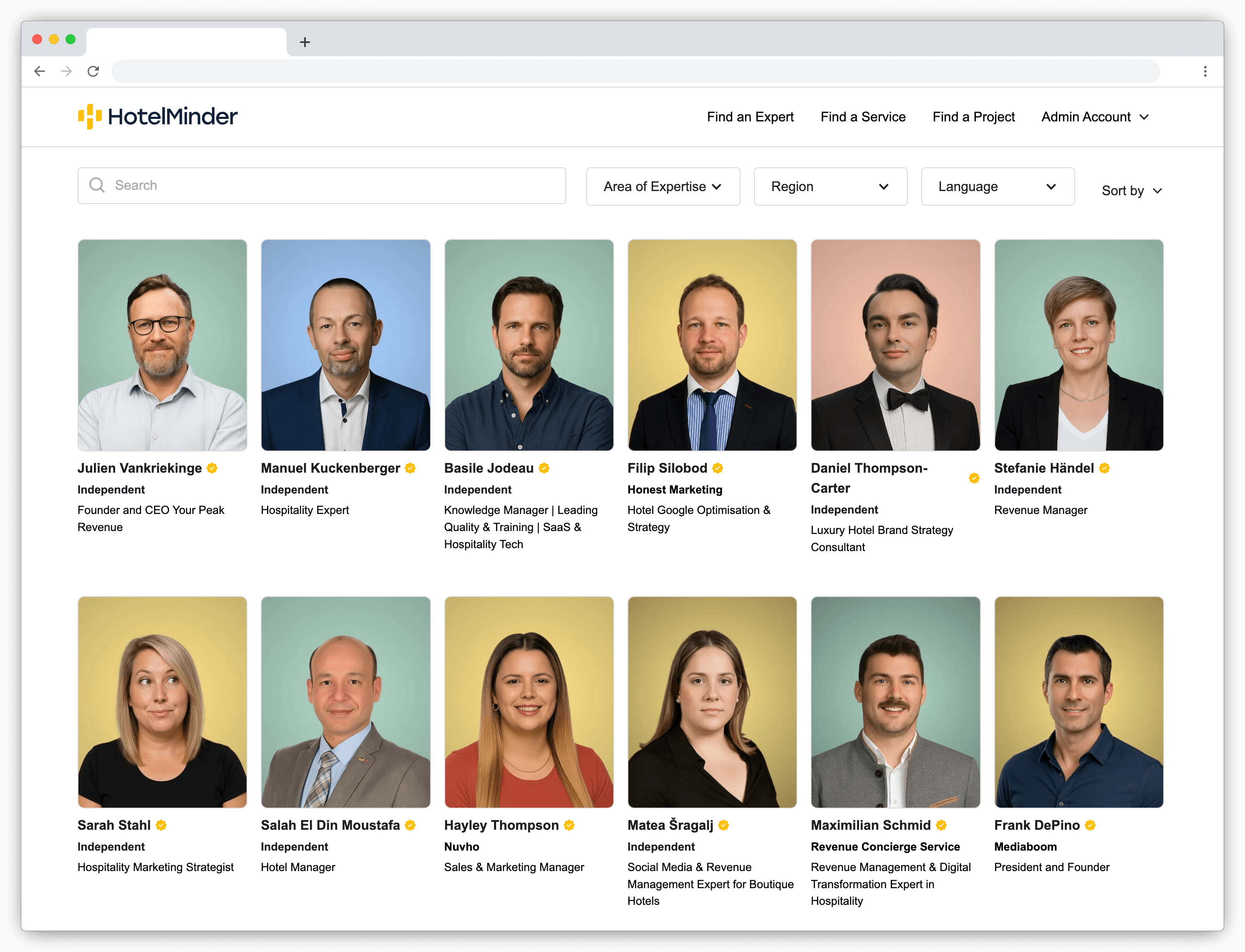7 Steps to Build a Reliable and Stress-Free Hotel Forecast
Stop guessing your demand. Learn the simple 7-step guide to hotel forecasting to build reliable budgets, optimize your pricing, and take control of your revenue.
 Written by
HotelMinder
in
Revenue Management
Written by
HotelMinder
in
Revenue Management Benchmarking, or the practice of comparing performance to the hospitality industry bests metrics and to the competition, is key to understanding a hotel performance.
In this article, we will look at which KPIs are the most widely used in Revenue Management and Performance Review.
There are several Revenue Management benchmarking KPIs which you can use to measure your hotel performance - below you will find a few of the most popular ones to get you started.
Keep in mind that in order to calculate accurate benchmarks, you’ll need to first create a competitive set.
This metric requires you to do a bit of market research beforehand to calculate what the various ADRs are within your competitor set.
The average rate index shows whether your rate is fair, above average or below average. It is recorded by comparing your average recurring revenue with that of your competitors.
With HotelMinder, match with vetted hotel experts to solve your operational problems.

ARI is calculated by comparing the Average Daily Rate (ADR) across a range of competitor hotels.
The formula is: ARI = Your ADR / Competitors average ADR.
A rate greater than 1 shows that your hotel is, on average, priced higher than your competitors. While a rate lower than 1 means that you are priced lower.
Once you have this data to hand, you can make a decision on whether to adjust your rates to increase more bookings or take the lower occupancy/higher revenue approach.
Remember, it’s not always the ideal situation to run at 100% occupancy if the revenues are too low.
Marketing penetration compares your property’s Occupancy percentage to your competitor set’s occupancy.
It will allow you to see how much - or how little - your property features in your market.
When you’re aware of your own Occupancy Rate (OR), you can then make comparison with your competitor’s.
This will give you an indication of how you are performing within your select niche.
You can calculate it by dividing your hotel’s Occupancy Rate by that of your competitor set and multiplying the result by 100.
Any number below 100 will mean that you are not getting your fair share of demand in your given market and any number over 100 means that you’re doing an excellent job!
MPI is the best metric to show how you are doing compared to others in your industry.
Once you know how you’re positioned within the market, you can adjust your marketing to entice customers to book with you instead of your peers.
However, a high percentage of occupancy isn’t always the best indicator of a successful hotel. If your hotel lower the rates and raises occupancy, you could still lose money through ailing margins.
By taking a close look at MPI over a period of time, you will be able to identify your property’s ideal occupancy and how to achieve it!
We help busy hoteliers find, setup and run the right applications and services to manage business according to their needs, budget, technical and human resources requirements.
HotelMinder brings value to hoteliers through a Knowledge Hub, a Technology Marketplace and one-to-one hotel management consulting services. With our 50+ years of combined expertise, we provide actionable solutions to critical business challenges, while establishing a relationship based on trust, engagement and mutual benefit. We help hotels meet and exceed their business goals through an in-depth analysis of consumer insights, business requirements and opportunities.
We are excited to announce the launch of Lobby, a brand-new network of hospitality consultants, which connects hospitality industry decision-makers with carefully vetted hospitality experts to deliver faster, more effective, actionable solutions to hoteliers’ top problems – launching to the public in October 2025.
If you are a hotelier who needs support, information or advice, or a hospitality industry expert who wants to help hoteliers achieve their business goals, you can enter the Lobby for free.
Your trust is our top priority. Whether you're choosing technology or connecting with an expert, we're committed to transparency. Here’s how we ensure you get unbiased, reliable guidance. Learn more about our promise.
Browse Knowledge Hub
Check out the latest insights, news and articles from the HotelMinder team, industry leading technology vendors and hospitality consultants.
Stop guessing your demand. Learn the simple 7-step guide to hotel forecasting to build reliable budgets, optimize your pricing, and take control of your revenue.
A hotel consultant debunks 3 common hotel technology myths. Learn why new tech isn't always the answer & how to truly optimize hotel operations for profit.
Access world-class hospitality expertise with Lobby. Our on-demand hotelier expert network offers proven solutions for revenue management, marketing, and technology challenges. Join free.
Learn Generative Engine Optimization (GEO) to boost your hotel's visibility on AI platforms like ChatGPT. Our guide covers websites, reviews, and OTAs. Get seen.
Discover more insightful articles in our Knowledge Hub and Partners Hub.
Sign up for expert insights, exclusive offers, and real solutions made for hoteliers like you.